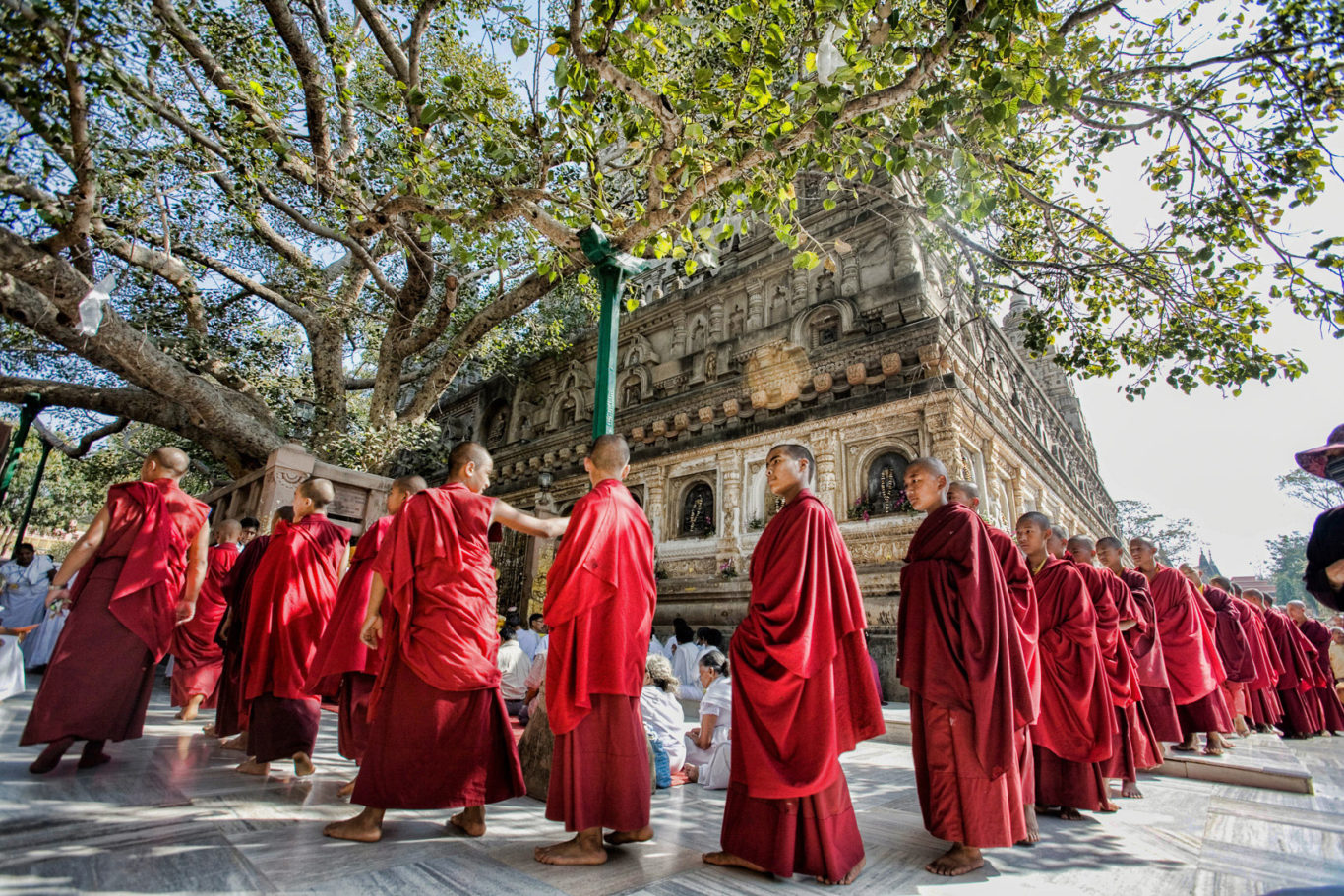Why do Buddhists walk in circles around (circumambulate) sacred objects?

Young Tibetan Buddhist monks circumambulate the sacred bodhi tree, said to be a descendant of the one under which the Buddha attained awakening, and the vajrasana, the Buddha’s “diamond throne,” at Mahabodhi Temple in Bodhgaya, India. | Gianni Muratore / Alamy Stock Photo
Circumambulation, the act of walking in a circle around an object of veneration, is common to many of the world’s religious traditions. Buddhists circumambulate to show devotion, pay tribute, cultivate their minds, and accumulate merit. Although the practice predates Buddhism, the Buddha mentioned it several times over his teaching career and said it purified negative karma and ensured a favorable rebirth.
In Buddhist circumambulation (pradakshina), the practitioner travels clockwise around a devotional object, keeping the object on their right while meditating, praying, or reciting mantras. The direction is significant because in Indian religion and culture, the right side is considered purer than the left, as the right hand is used for eating and the left hand for cleaning, making it ritually impure.
Buddhists circumambulate many different types of devotional objects: stupas (shrines), temples, statues, sacred mountains, even people. When the Buddha visited his ancestral home at Kapilavastu, the elders of his clan bowed to him, then circumambulated him as he sat in their midst as a sign of respect.
Buddhist tradition holds that circumambulation should be practiced with body, speech, and mind—walking, saying prayers, and thinking beneficial thoughts. As the Tibetan teacher Lama Zopa observed, “If your mind is distracted and you are gossiping while you are circumambulating, there is no great benefit.” Intention is always more important than ritual in Buddhism.
Some traditions place great significance on the number and timing of circumambulations, but these rules vary by site and tradition. The general guideline is, the more circumambulations, the better—a minimum of three times is customary, honoring the triple gem. But however many you are able to do is the right number, and whenever you are able to do them is the right time.
One of the most famous (and longest) circumambulations in the Buddhist world is the 32-mile trail around Mount Kailash in Tibet, known as the home of Chakrasamvara, the Buddha of Great Bliss. Those acclimated to high altitudes may complete the entire circuit in one 14-hour day, but most pilgrims require several days. Particularly devout practitioners will make the entire circuit while doing full-body prostrations, dropping to the ground, then lying flat, face down, with their body stretched out and arms extended before them. After each prostration, the devotee stands, takes a step forward, and then repeats the process. Making the trip this way is arduous but is said to produce great merit. Other famous Buddhist circumambulation routes include circling the Mahabodhi temple in Bodhgaya, the Boudhanath Stupa in Kathmandu, the Jokhang Temple in Tibet, and the Dalai Lama’s temple in Dharamsala. In Japan, the so-called “marathon monks” of the Tendai sect circumambulate Mount Hiei—and eventually the entire city of Kyoto—during a punishing 1,000-day circuit.

Tricycle is more than a magazine
Gain access to the best in sprititual film, our growing collection of e-books, and monthly talks, plus our 25-year archive
Subscribe now